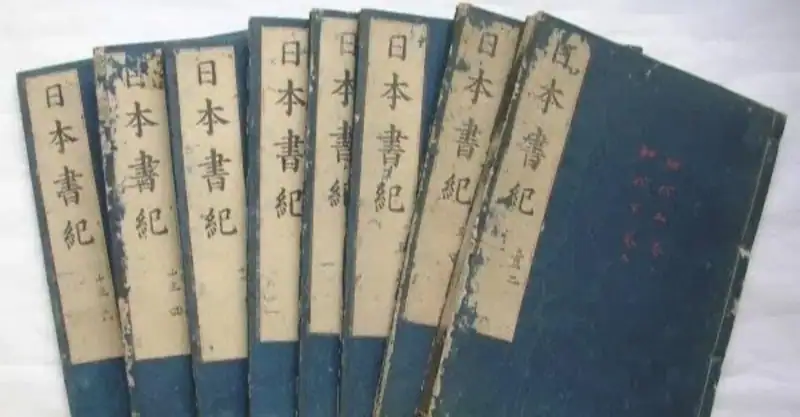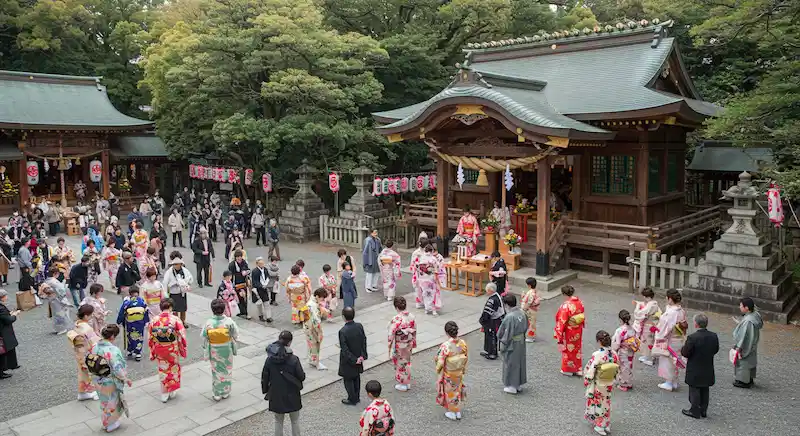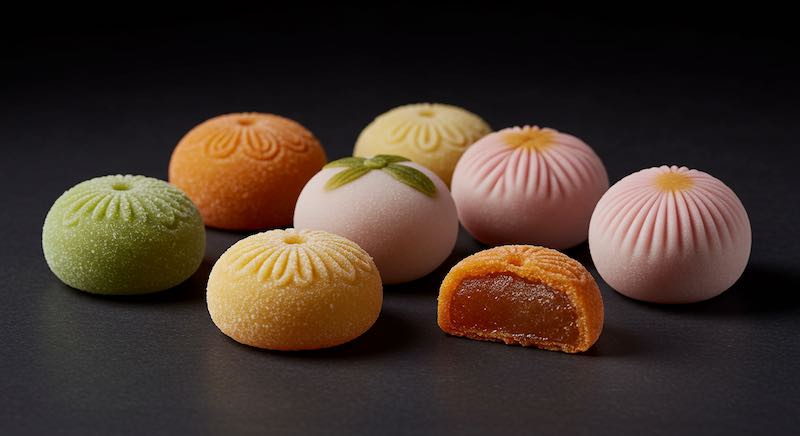Category: Culture and Traditions

Sekku: A Deep Connection with Tradition and Belief
The Japanese Spirit of Celebrating Seasonal Milestones – The Significance of Sekku Japan has a long-cherished culture of valuing the changing seasons and marking these transitions with special events.Representative of this are the “Go-Sekku” or Five Seasonal Festivals.But are these merely annual observances?This article delves not into the specifics of each festival, but rather into…

What is Hina Matsuri?: A Tapestry Woven Through Time
The Enduring Charm of Hina Matsuri – A Bridge Connecting Centuries Celebrated annually on March 3rd, Hina Matsuri, also known as “Momo no Sekku” (the Peach Blossom Festival), is a visually splendid and deeply symbolic Japanese tradition dedicated to wishing for the happiness and healthy growth of young girls.The fact that this festival, with origins…

Why Japanese Tea Could Be Your Next Healthy Choice
More Than Just a Drink – Tea at the Heart of Japan If you ever get the chance to visit Japan, take a moment to observe the people on its streets.You’ll notice many Japanese individuals with tea in hand – during work breaks, with meals, and from the ubiquitous vending machines found on nearly every…

Why Is Japanese language Like This? Common Pitfalls for Foreign Learners
An Insider’s Guide to the Most Confusing Aspects of Japanese language Learning Japanese can feel like navigating a maze, especially when you encounter concepts that don’t have direct equivalents in English.Have you ever wondered why the simple English verb “get” turns into “morau” or “ageru” depending on who is giving to whom in Japanese?Or why…

What is Sado? Exploring the Significance of Japanese Tea Ceremony in Modern Japan
Deepening Understanding of Japanese Tea Ceremony The Japanese Tea Ceremony, known as Sadō (Chadō) or Chanoyu, is a tradition that extends far beyond the simple act of preparing and drinking tea.It is deeply rooted in spirituality and cultural significance, setting it apart from the “tea time” generally understood in the West.This article delves into the…

What Is the Nihon Shoki and Why Is It Important Today?
Discover how the Nihon Shoki shaped Japan’s mythology, politics, and identity. When we introduce Shinto shrines and the Shinto religion in Japan, we inevitably touch upon their origins and the deities enshrined within them.This naturally leads us to discuss ancient texts like the Nihon Shoki and the Kojiki.However, these books contain unique Japanese historical perspectives…

What Are the Different Types of Shinto Shrines and Their Historical Ranks?
A Comprehensive Guide of the Differences of Jingū, Taisha, and Tenmangū For people outside of Japan, it’s common to think that there’s only one type of Shinto shrine.But in reality, there are various kinds of shrines!If you’re planning to travel to Japan and visit shrines, understanding the different types will deepen your understanding of the…

How Does Ancient Japanese Elegance Influence Modern Culture Today?
Japan’s Beautiful Old Lunar Month Names In modern Japan, it’s common to use numbers like January and February to count the months.However, in the past, Japan had beautifully resonant traditional month names (wafū-getsuei) that reflected the season and atmosphere of each month.Elegant names like Mutsuki and Kisaragi are not just names; they are precious cultural…

What Is Kawaii? Origins, Meaning, and Popular Japanese Characters
The word “kawaii” in our daily lives.Small animals we see in the city, the adorable smiles of children, and charming character goods.But what exactly is “kawaii”?Let’s explore the special nuances of this Japanese word, which is slightly different from the English “cute”, trace its origins, and introduce some of the popular “kawaii” characters in Japan…

What Makes Japanese Wagashi Sweets Unique? Artistry and Craftsmanship Explained
A Long History of Japanese sweets: The Origins and Evolution of Wagashi Wagashi, traditional Japanese sweets, are more than just confectionery; they are an embodiment of Japanese culture, history, and aesthetic sensibilities.The delicate designs that reflect the changing seasons, the deep connection with the refined culture of the tea ceremony, and above all, the passion…
Search the website
Profile
Takeshi.K

A creator sharing the beauty of Japan with the world. I run a design firm and SHIBUMIWORKS, an apparel brand featuring Japanese traditional patterns and kanji. This blog explores Japanese culture, food, history, and travel.
Categories
- Spirituality and Religion (6)
- Health and Wellness (9)
- Culture and Traditions (28)
- Japanese Spirit (14)
- Japanese Food (32)
- Japan Tourism (12)
Recent Post
Archives
Terms Display
Ashiyu Bushido Common Food do Egg Healthy Food Hot Spring IZAKAYA Japanese Alcoholic Drinks Japanese Fasion japanese heritage Japanese language Japanese Sake Japanese Sweets Japanese Tea Kofun Manners and Rules Nara prefecture Ramen Rice Roots to the Present Day Shinto Shrine Society and Values Soul Food Spices and Seasonings SuperFoods Sushi Traditional Event Train



















